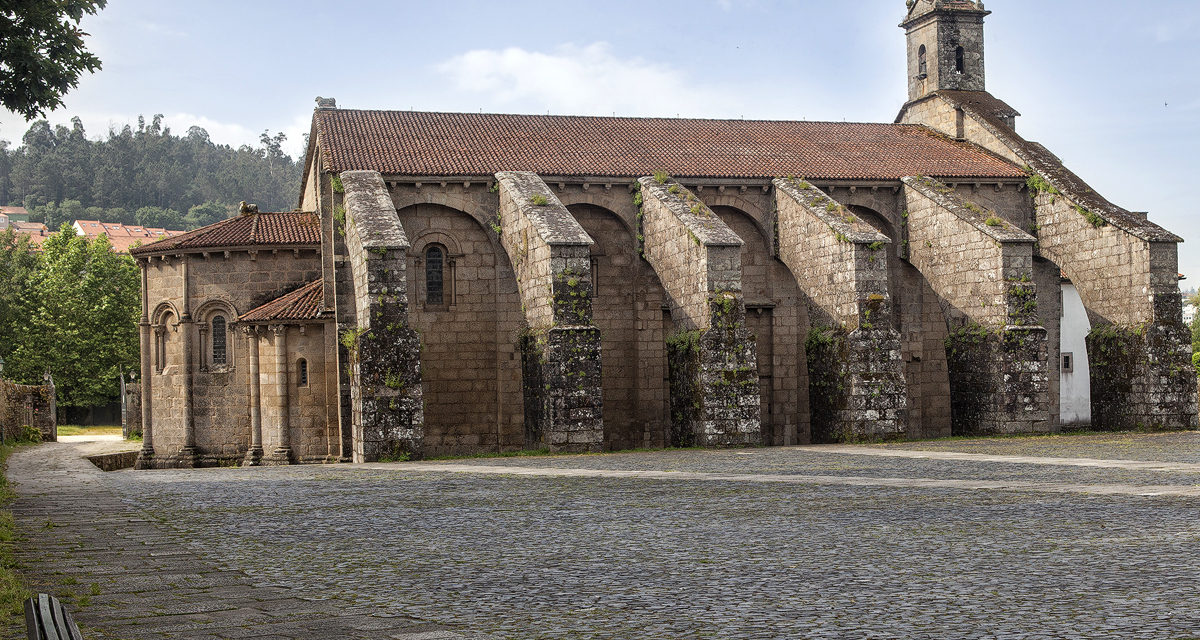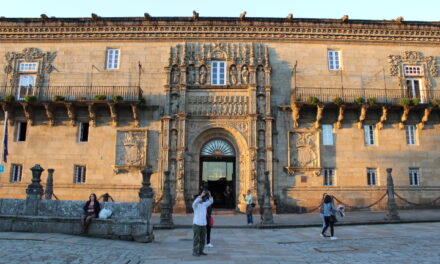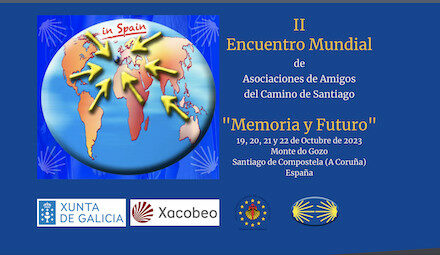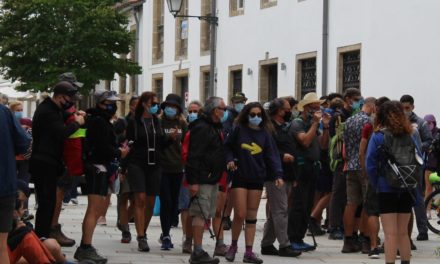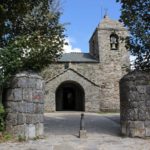The site of the Collegiate of Santa María del Sar, outside the medieval walls of Compostela, plays an important part in the long Jacobean tradition. The Sar neighborhood is named after the river which runs through it and is the entrance for the pilgrims who come from the south, those who walk the trails and roads known as the Via de la Plata and Southeastern Way. The church was founded in 1136 by Munio Alfonso, a former member of the Chapter of the Cathedral of Santiago, a faithful collaborator of Bishop Diego Gelmírez and co-author of History of Compostela. Santa María del Sar began as a priory with canons who followed the rule of St. Augustine and its splendid Romanesque architecture was completed in 1168.
The architectural plan was for a basilica with three naves of five sections organized by pillars and a triple apse. The oldest part corresponds to the chapels of the apse, which was begun in the second third of the twelfth century by a workshop clearly influenced by those who worked on the cathedral of Santiago. The construction lasted more than a century and it is very likely that its architecture was not completed until the early thirteenth century. All historians agree that the completion of the church and construction of the cloister would have been made by a workshop linked to the Maestro Mateo, the architect responsible for the Portico of Glory.
The particularity that has made the church famous is the inclination of large parts of its walls and pillars -caused by a fault in the counteraction of the side vaults and for having been built on a marshy area- it gives an appearance of instability and inclination that calls to mind the famous leaning tower of Pisa.
Apart from its ‘leaning’ aspects, the Romanesque lover cannot help but enjoy the richness and variety of the corbels of the church, the cloister capitals and numerous sepulchral tombstones and sarcophagi of the XII-XIV centuries adorn the cloister bays.

